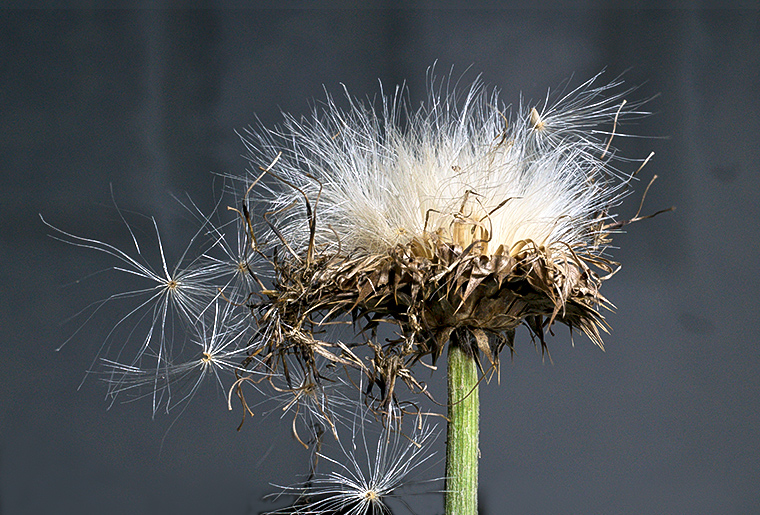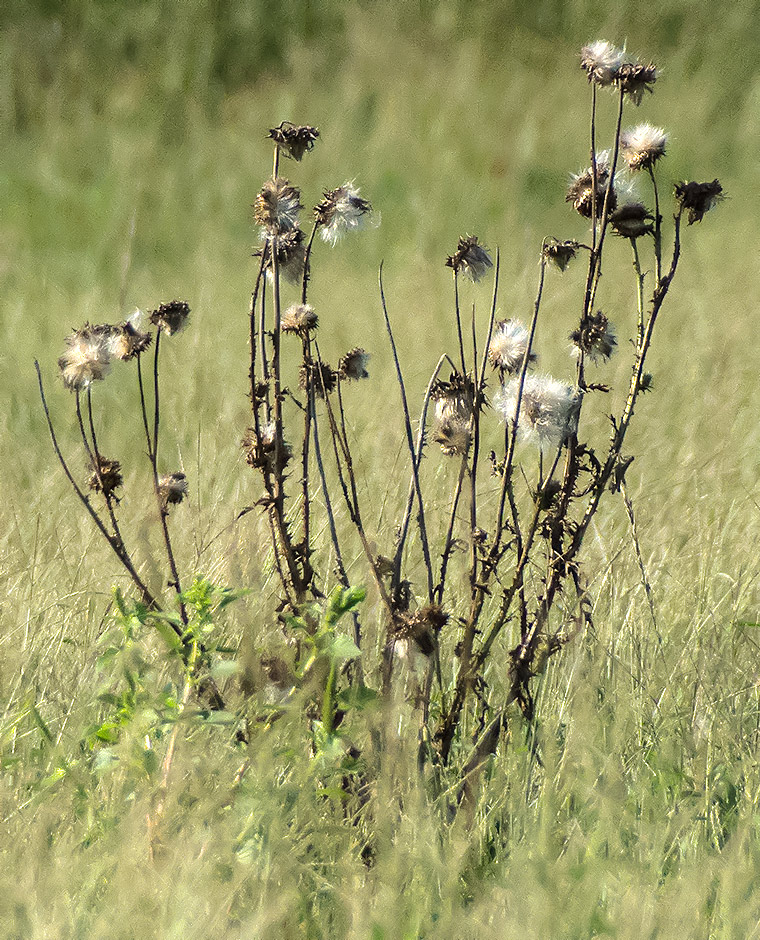By this time of year the flowers in the thistle heads that have been fertilized have each produced a seed. Each seed is equipped with gossamer filaments that catch the slightest breeze and disperse the seed to a new location. Very few of the seeds manage to germinate into a new plant, but there are so many seeds produced that there is a good chance that some seeds will produce new plants.
Most of the younger flowers I have pictured in previous posts on this blog came from a plant that was growing on the roadside near our house. As I noted in an earlier post, that plant was mowed down by the County Highway Department. The photograph below shows a different plant which escaped the mowers by growing in a field a little way from the roadside. All the seed heads have produced seeds and the plant is dying.
Maybe I am too fascinated with thistle plants, and by now I have bored you all to death with photographs of various stages in flower development. I promise this will be the last thistle post for a while. Look for the Devil’s Walking Stick in future posts!



Aha! Those are what were in the pool this morning, and I’ve seen no thistle in the bank behind the house where I tossed out the ancient niger seed. No wonder the birds didn’t want it.
Thanks! Really hate the herbicides on the roadside.